The 5 Most Absurdly Difficult Video Game Puzzles (Pt. 2)
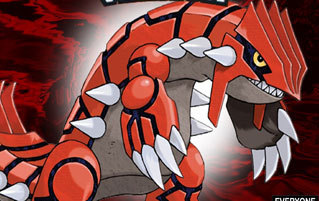
Designing a good video game puzzle is hard. You want to force the players to stop and think, but not frustrate them to the point where they give up and go read a book instead. But as we've shown you before, sometimes developers just don't give a shit. Or maybe they hate us. That's how you wind up with ...
(Love is the greatest puzzle of all. Watch Cracked solve it in our new Rom.Com mini-series.)
Metal Gear 2: Solid Snake's Owl

Long before Metal Gear Solid set bold new standards in stealth gameplay and incomprehensible storylines, the original Metal Gear games were offering up sneaking and philosophizing in eight simple bits. The second game found Solid Snake infiltrating a military prison guarded by an elite Special Forces unit to rescue a kidnapped scientist, which is a pretty serious scenario for an era where saving a princess from a giant turtle was considered heavy-duty storytelling.
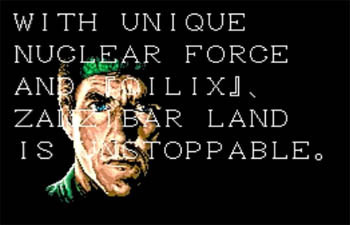
Late in the game, you find yourself blocked by a laser fence. You can't pull off sweet acrobatic moves to get through it because there's a guard waiting on the other side, and also this is a game from 1990. So you consider your options.
There's got to be another, less obvious way inside. A hole in the wall you can sneak through, or a key card you can steal. Skulking around is Snake's bread and butter, so that would make sense. But no, you search and search and come up empty.
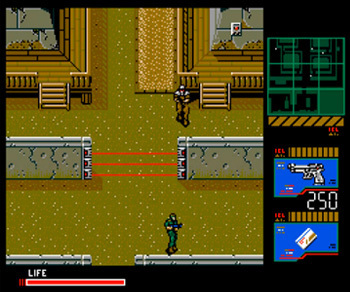
The only hint you can find is a kid who tells you that the gate shuts off at night. A prison that turns off its security features when it gets dark makes the designer of the Death Star look like a genius, but whatever, that's just video game logic. Maybe they're trying to save on their electric bills or something.
So you need to wait for night, but at no point in the game have you seen the time of day change. Maybe you have to find a location where you can sleep in safety? You've got no better ideas, so you start wandering aimlessly. Eventually, well away from the gate, you stumble across a lab that's housing a giant, inexplicably well-guarded egg.
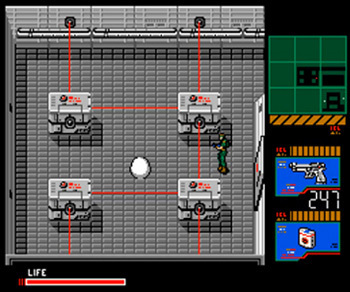
Uh, OK. You're not sure what that's about, but you grab it, because the first life lesson gamers learn as children is to steal everything they see. Unfortunately it's still daytime, so you keep wandering until the egg hatches into a full-grown owl that doesn't object to being stuffed in your trousers.
Oh, well now it's obvious. You take the owl out of your pants at the laser gate, because its gentle hoots will convince the guard that it's nighttime. Wait, what?
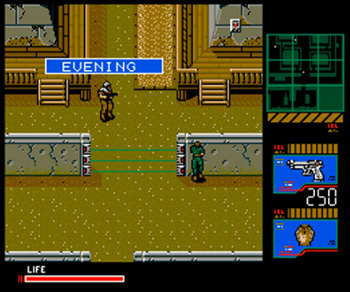
Remember, you're battling what is supposed to be an elite military unit. And yet apparently their soldiers tell time not with carefully calibrated wristwatches but by the calls of the local avians. "What do you mean the sun's still beating down on us? Didn't you hear the owl?"
Shockingly, these sorts of puzzles didn't make it into later Metal Gear games, because few gamers would think to resort to Doctor Dolittle antics in the middle of a war zone.
X-Men's Reset Button Doesn't Exist (Inside the Game, Anyway)

The 1993 X-Men game for the Sega Genesis is mostly a standard beat-'em-up, with little strategy beyond "walk forward and punch/stab/laser eyes everything." It's a superhero action game, not Skyrim.
But at the end of the penultimate level you're left in a nearly blank room with a computer console and a single sentence for instructions: " Reset the computer." Since every obstacle up to this point has been defeated with violence, you naturally assume that you need to punch a computer into submission. (The other lesson games teach us as children: If it isn't meant to be stolen, it is meant to be destroyed.) When you can't find any computers that respond to super-beatings, you start wondering if you missed defeating an enemy or flipping a hidden switch, and you scour every inch of the level in the hopes of finding the secret to progressing.
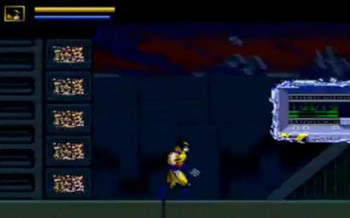
And you will never, ever find it. Not if you play for the next 20 straight hours, raging in frustration, convinced that you got a glitched copy of the game. That's because the solution doesn't exist anywhere within the game universe: It exists in the real world. "Reset the computer" means you have to physically reset your game console.
And think for a moment about how counterintuitive that is. Gamers generally only touch the reset button when a game freezes, because ... you know, it resets your progress. This was before games automatically saved every five minutes -- a poorly timed reset could cost you everything. Had the game been riddled with obscure puzzles and meta references from the beginning, it's possible gamers would have figured it out, but who on Earth is going to get that fourth-wall-breaking reference late in a game where the most complicated puzzle up to that point was trying to figure out why the developers bothered to include Cyclops when everyone was going to play as Wolverine?

It's no wonder that most gamers either got stuck or figured it out by accident. And that's not counting players who reset the game for real by holding the button down too long or played the game on the handheld Sega Nomad, which incidentally didn't have a reset button. The last level could have been a montage of satanic rituals and orgies for all the people who actually saw it.
Meanwhile, the Nintendo DS RPG The World Ends With You, whose developers are firm believers of the "fool me twice, shame on me" school of game design, pulls basically the same trick. One of the game's special enemies is a sleeping pig who runs away the moment you attack it. If for some reason you're really dedicated to murdering this innocent animal, you need to close your DS to put it in sleep mode. Get it? Because the pig was sleeping? No?

Discworld's Mustache

Discworld is based on the offbeat comedic fantasy novels, so naturally some of the puzzles are a little out there. But there's a difference between "out there" and "so far out there that you'd seriously doubt the sanity of anyone who gets it without help," and the effort needed for you to acquire a mustache falls firmly in the latter category.


At one point you need a mustache to help you defeat a dragon (don't ask), and obviously you get a suitable fake by snipping off the corner of a donkey's tail. But how are you going to get the donkey to settle down long enough for you to have at it?
First you need to grab water, soap, a pot, and a brush from four distant corners of the game. This will allow you to clean the donkey cart's license plate, because when you're on a quest to save the world, your first priority will naturally be to clean random property and memorize license plate numbers as though you have a very specific form of obsessive-compulsive disorder.
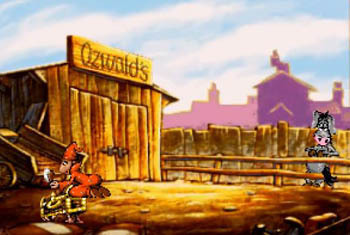
So you've got the number. What next? Why, it's off to the assassins' training grounds, of course! There, a novice assassin is proving his mettle by running an obstacle course that includes ladders set between rooftops. If you climb up and sabotage one of the ladders with your knife for no apparent reason besides being a complete asshole, the assassin will plummet to the ground and suffer a nasty knock.
Instead of fleeing the scene of the crime, you can go down and chat with your assault victim, who'll ask, "Did you get the number on that donkey cart?" which is a running joke told by the game's many head trauma sufferers. But this time you'll have an answer because of your random act of cleaning. The plate, incidentally, is "SORE-ASS," because what better way to reward players for what was almost certainly hours of monotonous trial and error than with a terrible pun?
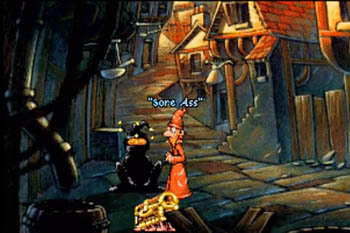
The result of all this is that the donkey gets locked up in the stocks, because apparently the assassin was cognizant enough to report a crime and yet suffered enough brain damage to completely forget that he fell off a roof. It's now a simple matter of snipping off a corner of the donkey's tail ... assuming you found the tiny scissors hidden in a few pixels in the barber shop.
Jesus Christ -- Rube Goldberg would consider that to be needlessly elaborate. There's no logic to this puzzle; you're just committing random acts that magically produce the result you want. Think about all the other, more straightforward ways a player would try to come across a mustache first. Like doing something with the facial hair you have on your own goddamn face.
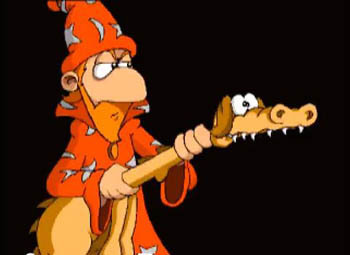

Zork II came out in 1981, a time when many video games were still lacking the "video" part. The early Zork games were text adventures, and even in a genre infamous for puzzles that assumed the player literally had months to devote to endless random guesses, Zork's seemingly unsolvable obstacles stood out.
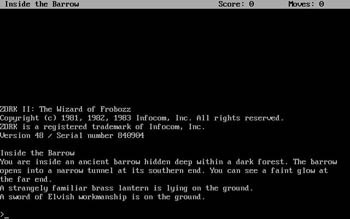
Still, patient gamers who could get into the weird headspace required for these adventures could get through Zork II without too many frustrations. At least until they reached the " Oddly Angled Room."
You quickly realize that the room is a maze, but that shouldn't be a problem -- one of the first things you learn when you play text games is to draw a map as you go. But that's no help in the Oddly Angled Room, because your movements seem to take you to totally random places. Well shit, now what?
You should probably examine the room a little closer. Here's what you learn: "A LONG WOODEN CLUB LIES ON THE GROUND NEAR THE DIAMOND-SHAPED WINDOW. THE CLUB IS CURIOUSLY BURNED AT THE THICK END. THE WORDS "BABE FLATHEAD" ARE BURNED INTO THE WOOD."

Oh, OK. So, have you figured it out? Go on, take a minute to really think about it. We'll wait.
Right, you got it? If you realized that the clues are referring to baseball, congratulations! You're a goddamn liar, because nobody could have figured that out.
Gamers are stereotypically not known for their sports prowess, and it doesn't help that the "references" to baseball are more subtle than the subliminal messages hidden in this article (take every 23rd letter and you get " BUY A SHIRT"). It's like if your grandma had to recite the lyrics to a Polish gangster rap before she was allowed to finish her bingo card. If they referred to the club as a bat, it would make more sense, but instead it sounds like a weapon or a torch, both common items in Zork. And even if you're a massive baseball fan, associating random diamond-shaped objects with the sport is more likely to be a sign of an oddly specific mental illness than anything else.
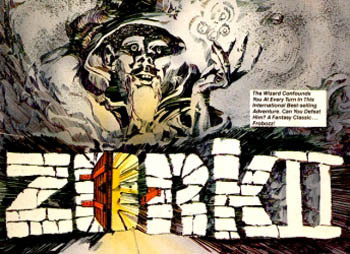
If through some cognitive miracle you make the connection, you're still nowhere near to solving the puzzle. To get through the maze, you need to "run" the bases, but there's no indication as to where home plate is located, meaning that your first movement could be in any direction. The only "hint" is that the diamond window gets slightly brighter with every successful move. Obviously.
The designer of this puzzle actually apologized for it, noting that it wouldn't be accessible to foreign gamers unfamiliar with the rules of baseball. Or Americans who aren't big on baseball. Or hardcore baseball fans who weren't expecting their favorite sport to pop up in a fantasy adventure featuring wizards and elves. Or anyone else, ever.
Pokemon Ruby and Sapphire's Braille

One of the reasons the Pokemon games are so successful is because they're simple. That's not a bad thing -- players can wander the world to catch cool monsters without getting frustrated by obstacles. Even the game's "legendary" Pokemon, while tougher to find, don't offer unreasonable challenges. At least until the developers started working on the third generation of games, Pokemon Ruby and Sapphire, and for some reason said to themselves, "Hey, you know what kids would love? Obtuse Braille puzzles!"
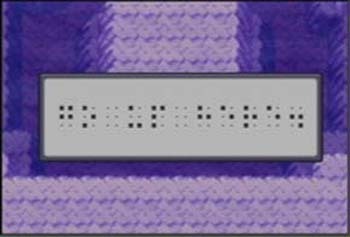
Pokemon Masters who manage to find the obscure Sealed Chamber are greeted by wall after wall of messages written in Braille. The first room "helpfully" provides a cipher, except without making it clear what sections represent what letters.
To further confuse matters, the Braille marks for commas and periods are placed on the side without context, throwing off anyone who manages to realize what the room is all about in the first place.
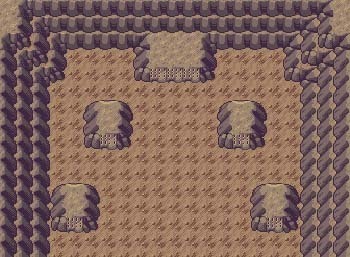
Moving to the next room gives you messages to translate letter by letter with the Braille alphabet you were forced to write down, which you may recognize as defeating the entire purpose of a language designed to be quickly processed through touch. Not since perfume commercials have people so misunderstood how the senses work.
The messages provide some backstory and also give you instructions to include two somewhat rare Pokemon in specific slots of your team. Assuming you understood the message, you track them down and then haul ass back to the cave. Well, that was tedious, but now you get to battle some legendary Pokemon, right?

Ha, no. Now you have to scour the world to find three random doors that have suddenly appeared on rocks that you previously ignored because they looked like unimportant pieces of set dressing. Stumble across these totally arbitrary locations and you'll discover more Braille, which give you instructions like " Stop and wait. Wait for time to pass twice." So naturally you put the game down and don't touch it at all for two minutes. Not because you understood the puzzle -- you're just sick of this bullshit.
Complete these silly little tasks and you can finally catch the game's legendary Pokemon. After jumping through all these hoops, they must be pretty rad, right?
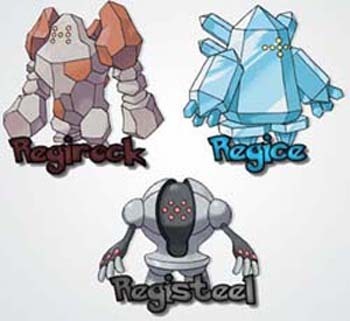
Nintendo sort of learned their lesson, first by making the puzzles easier in the enhanced version of the games and then by including a Braille chart in the sequels. You know, for fun.
Ian Ury is Pip Ury's twin brother, a general writer of stuff, and an occasional amateur animator. If you wanna comment, drop him an email. Ryan Menezes is a writer and layout editor here at Cracked. He broke down and made a Twitter page just for his Cracked fans.
Always on the go but can't get enough of Cracked? We have an Android app and iOS reader for you to pick from so you never miss another article.
Related Reading: Video game puzzles get more absurdly difficult. You try and solve Silent Hill's poetry. And while you're at it try and solve Google's most puzzling interview questions. Frustrated? Chill out by learning the secrets behind what you think are unsolved mysteries. Yeah, we totally know what happened to Amelia Earhart.